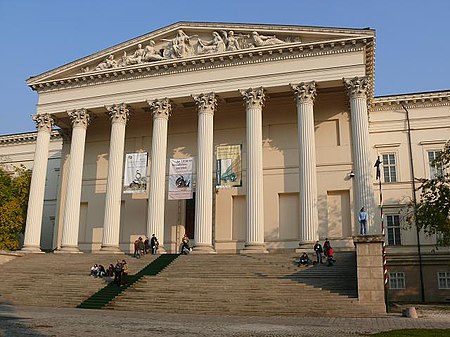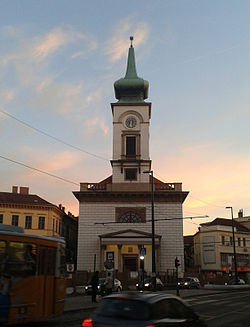Hungarian National Museum
1802 establishments in the Habsburg monarchy19th-century establishments in HungaryArchaeological museumsArt museums and galleries in HungaryBuildings and structures completed in 1802 ... and 8 more
History museums in HungaryHungarian National MuseumLandmarks in HungaryMuseums established in 1802Museums in BudapestMuseums of ancient Rome in HungaryNational museums of HungaryNeoclassical architecture in Hungary

The Hungarian National Museum (Hungarian: Magyar Nemzeti Múzeum) was founded in 1802 and is the national museum for the history, art, and archaeology of Hungary, including areas not within Hungary's modern borders, such as Transylvania; it is not to be confused with the collection of international art in the Hungarian National Gallery. The museum is in Budapest VIII in a Neoclassical building, purpose-built during 1837–47 by the architect Mihály Pollack.
Excerpt from the Wikipedia article Hungarian National Museum (License: CC BY-SA 3.0, Authors, Images).Hungarian National Museum
Múzeum körút, Budapest Palotanegyed
Geographical coordinates (GPS) Address Phone number Website External links Nearby Places Show on map
Geographical coordinates (GPS)
| Latitude | Longitude |
|---|---|
| N 47.491111111111 ° | E 19.062777777778 ° |
Address
Magyar Nemzeti Múzeum
Múzeum körút 14-16
1088 Budapest, Palotanegyed
Hungary
Open on Google Maps








